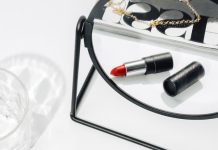
Every woman and girl has a piece of makeup that’s a precious lifeline, something we always carry around in case of an ‘emergency’. For some, it’s their favourite lipstick, for others, the perfect eyeliner. For me, and I bet, for many of you, that’s the concealer. If there’s only one thing I can put on before I leave the house, then that’s it. It’s the quickest way to hide dark circles, blemishes, spots, you name it.
Concealers and neutralisers are indispensable products in the world of makeup, serving as secret weapons in the pursuit of flawless skin. They offer plenty of benefits, from covering imperfections to colour correction. You just need to pick the right shades to achieve a seamless finish that enhances your natural beauty.
Uses of Concealers

Given their widespread and versatile functions, these products bring a host of benefits to the table. Depending on your needs or preferences, you can choose from a blurring and lightweight concealer makeup range that caters to your specific skin type.
Covering Imperfections
We all have some skin imperfections that we sometimes want to be covered. Whether it’s an acne breakout or hyperpigmentation from the sun, we need something more than foundation. Since concealer makeup is primarily designed to cover blemishes, acne scars, dark spots, and other imperfections on the skin, their thicker consistency provides better coverage than foundation alone, giving a smoother complexion.
Brightening the Under-Eye Area
You had a long, sleepless night and you can see it staring back at you in the mirror. Concealers work wonders in banishing dark circles and brightening the under-eye area. The reflective properties in some formulations help to counteract the shadows, making you appear more awake and refreshed.
Highlighting and Contouring
Do you want to highlight certain areas on your face? Professional concealers are essential for creating dimension. Lighter shades can be used to highlight areas like the centre of the forehead, bridge of the nose, and cheekbones, while darker shades help contour areas like the jawline and sides of the nose.
Defining Eyebrows
A concealer can be a neat tool for defining eyebrows. Applying a concealer around the brows can clean up any stray hairs and provide a sharp, polished look. While picking a shade, go for one that is either one or two shades lighter than your skin tone for the most natural finish. This also helps in highlighting and defining the brow bone.
Benefits of Neutralisers
Neutralisers, also called correctors, are pale-coloured tints. They don’t come in natural skin tones, but rather in peach, rose, green, orange and yellow shades. Their goal is to block out undesired skin discolouration or even bruises, and are best applied under foundation or concealers.
Colour Correction
Neutralizers are specifically formulated to counteract and balance out specific colour concerns on the skin. For instance, a green neutralizer can cancel out redness, while a peach or orange one can counteract dark circles and hyperpigmentation. Think of it as colour theory applied to makeup, where opposite shades cancel each other out. As such, a little knowledge of the colour wheel can go a long way in helping you choose the right neutralizer for your complexion.
Evening Skin Tone
Neutralizers contribute to achieving an even skin tone by neutralizing and correcting discolourations. They are particularly useful for individuals dealing with conditions like rosacea or persistent redness. Anyone with dark undereye circles can also opt for a peach or orange neutralizer to counteract the blue/purple hues before applying concealer.
Enhancing Longevity
Neutralizers not only correct colour concerns but also contribute to the longevity of makeup. By addressing specific issues before applying foundation, neutralizers create a smooth canvas for makeup application, ensuring it stays put throughout the day. If you’re troubled with redness around the nose, try a green neutralizer to tone it down before applying foundation.
Choosing the Right Shades
Now, this has proven to be a tricky part for many women- choosing the right shade of concealer makeup. Let’s try to break it down.
Matching Undertones
When selecting concealers and neutralizers, it’s crucial to consider your skin’s undertones. For example, individuals with warm undertones may opt for peachy or yellow-based concealers, while those with cool undertones may lean towards pink or lavender tones. If you are not sure what your undertone is, visit a beauty counter and ask for a skin tone test.
Intensity of Concern
The intensity of the concern you’re addressing should also guide your shade selection. For dark circles, choose a concealer that is one to two shades lighter than your foundation. When neutralizing redness, opt for a green neutralizer that is just strong enough to counteract without creating an unnatural hue.
Testing in Natural Light
Always test concealers and neutralizers in natural light to ensure an accurate match. Artificial lighting can sometimes distort the appearance of shades, leading to mismatched results. When you try them on in natural light, you’ll know exactly what works for your skin tone. This is also the best way to determine if there’s any oxidisation when the product mixes with air and ultimately changes colour.
Consider Multiple Shades
Depending on your skin concerns, having a selection of concealers and neutralizers in different shades can be beneficial. This allows you to customize your makeup routine based on the specific issues you want to address. Think of it as creating your own personal palette of colours that cater to your skin and its unique needs.
How Do I Apply Concealer?
• Prep Your Skin: Begin with a clean, moisturized face. Apply your foundation first to even out your skin tone before reaching for concealer.
• Dark Circles: For under-eye circles, opt for a concealer with peach or salmon undertones to neutralize the blue/purple hues. Apply in a triangular shape with the base along your lash line and blend gently.
• Blemishes: Dab concealer directly onto blemishes, using a clean brush or your fingertip to blend the edges seamlessly into your foundation.
• Highlighting: Use a concealer that is 1-2 shades lighter than your skin tone on the high points of your face – the tops of cheekbones, bridge of the nose, and cupid’s bow.
• Contouring: Choose a concealer 1-2 shades darker than your skin tone for contouring along the hollows of your cheeks, jawline, and sides of the nose.
Blending Techniques

- Fingers: Warm the concealer between your fingers and gently tap onto the skin, blending outwards.
- Brushes: Use a small, flat brush for precise application or a fluffy brush for a softer, diffused look.
- Beauty Sponge: Dampen a makeup sponge and bounce it over the concealer for an airbrushed finish.
- Setting the Concealer: To prevent creasing and ensure long-lasting coverage, set your concealer with a translucent powder. Use a small brush to apply a minimal amount, focusing on areas prone to creasing.
Takeaway
When it comes to makeup, concealers and neutralizers are unsung heroes, offering a bunch of uses and benefits beyond their apparent function. From camouflaging imperfections to colour correction and highlighting, these products play a pivotal role in achieving a flawless finish.
Choosing the right shades when you buy concealers is an art in itself, requiring an understanding of undertones, intensity of concerns, and the importance of testing in natural light. Once you master the art of concealers and neutralizers, you can unlock the full potential of your makeup routine, enhancing natural beauty and achieving a radiant complexion.















